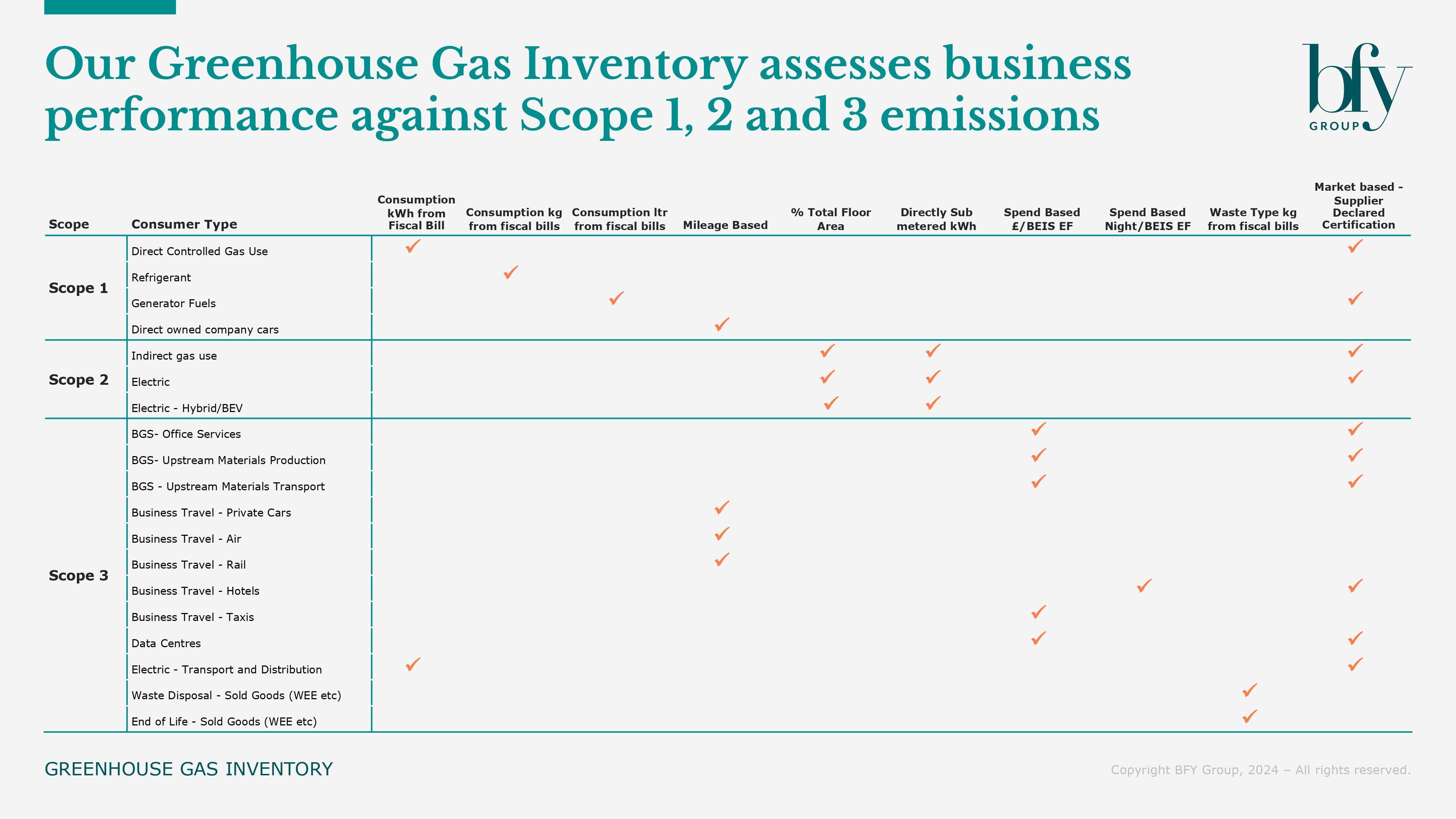For carbon reduction to feel achievable, business leaders need clear direction on where to act (and how) to drive the most impactful efficiencies. With this clarity comes greater opportunities for cost savings, value creation, and investor attraction.
So where should you start?
Measuring emissions using the Greenhouse Gas Protocol is key, and as we'll explain below, Scope 3 should be the primary focus area for most businesses to drive a tangible impact. The Protocol provides the most widely recognised accounting standards for greenhouse gas (GHG) emissions, categorised as:
Scope 1: Direct emissions caused by a company’s own operations. Examples include emissions from machinery, vehicle use, heating buildings, and powering computers.
Scope 2: Indirect emissions resulting from the purchase and use of electricity, steam, heating, and cooling. By using the energy, the business is indirectly responsible for the release of GHG emissions. Using renewable energy sources instead of fossil fuels can reduce Scope 2 emissions.
Scope 3: Also indirect emissions, but they stem from activities outside the company itself. Scope 3 covers emissions produced by customers using the company’s products or by suppliers involved in making those products. It’s often the most significant category to tackle.
Scope 4: Avoided emissions resulting from the use of more energy-efficient or environmentally friendly products or services, for example using teleconferencing instead of travelling to a meeting, or using a product with a more energy efficient battery. Scope 4 are not currently reportable.
Why should businesses focus on reducing Scope 3 emissions?
For most businesses, the majority of their GHG emissions and cost reduction opportunities are outside of their own operation. Addressing Scope 3 emissions can help advance an organisation’s decarbonisation and sustainability journey, as shown by our Carbon Strategies team, who recently identified opportunities for ~£100m in savings for a client, through reporting on carbon emissions.
Although the client in this example is a global FTSE-100 business, efficiencies are achievable and relative across different sizes and sectors. Leveraging our expertise across carbon reduction, and value creation in Private Equity, we’re able to accelerate decarbonisation with tangible benefits for businesses and investors.
Investors should be considering Scope 3 emissions in their risk models and evaluations. This is driven by:
- Tightening regulations: More regulators are including mandatory disclosure requirements to include Scope 3 emissions
- Opportunities to assess climate risk: Scope 3 emissions could enable investors to identify and assess climate transition risks and opportunities in their portfolios
- A need to avoid Greenwashing: The exclusion of Scope 3 emissions in net zero target could weaken the credibility of climate efforts
Alongside meeting changing regulatory requirements, measuring Scope 3 emissions allows businesses to identify value creation opportunities by:
- Assessing where emission hotspots are across their value chain to prioritise reduction strategies
- Identifying which suppliers are leaders and laggards in terms of sustainability performance
- Informing decision making operational teams, based on which interventions can deliver the most significant emission reductions
- Encouraging product innovation to create more sustainable and energy-efficient products
- Advancing their climate strategy to create genuine, quantifiable, and visible change
- Positively engaging with staff to reduce emissions from business travel and employee commuting
How can my organisation measure its carbon emissions?
Our team help organisations to measure and manage emissions across the value and supply chain. This involves calculating their footprint, covering their value chain and Scope 3, with our experts outlining steps to accurately baseline and measure the footprint, spending effort on the most material categories of emissions.
Our analysis can help you identify key focus areas for reducing your carbon emissions, and build a roadmap to achieve carbon neutral or zero carbon.
Future improvements to EBITDA are identified through qualification of associated cost savings or avoidance that can be achieved through “using less and buying better”, as well as supporting the reporting requirements of your customers and investors.
You can see a snapshot of our carbon emissions analysis below.

If you’d like to know more about measuring carbon emissions in your business or portfolio, and the tangible improvements you can deliver, contact Angela Tooley.
You may also be interested in our recent insights:
Angela Tooley
Head of Private Equity, Infrastructure & ESG
Angela specialises in the creation and implementation of growth strategies, as well as supporting clients through special situations, with M&A advisory, restructuring, and crisis management.
View Profile

